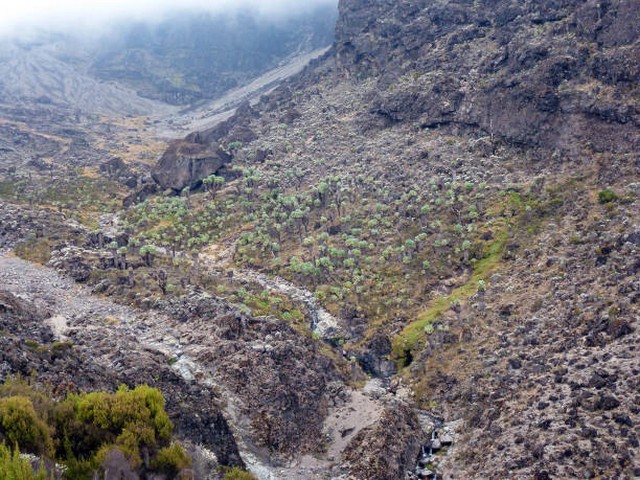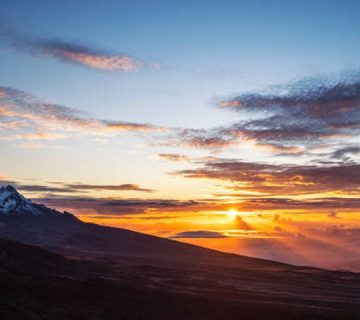Cultural Preservation Through Kilimanjaro Trekking
Exploring the Rich Tapestry of Tanzanian Heritage at the Roof of Africa
Nestled in the heart of Tanzania, Mount Kilimanjaro isn’t just the highest peak in Africa; it’s a vibrant canvas showcasing the lush tapestry of culture and tradition that has thrived around its base for centuries. At Kilimanjaro Centre for Trekking and Ecotourism (KCTE), we believe that every step taken on this majestic mountain is a step towards understanding and preserving the unique cultures that make Tanzania a mosaic of enchanting historical narratives and contemporary livelihoods. Join us as we unravel how trekking this iconic mountain contributes significantly to cultural preservation.
The Footprints of Tradition: Trekking as a Cultural Journey
Embracing Local Communities
Each trekker climbing Kilimanjaro embarks on more than just a physical ascent; they step into a world where every path and village tells a story. As you begin your journey from the lower slopes, you experience life in the Chagga villages, one of the indigenous tribes of Kilimanjaro. Here, traditional Chagga houses and ancient irrigation channels illustrate a people’s adaptation to and harmony with the mountain’s environment.
Learning Through Local Guides
Our guides at KCTE are custodians of their culture and environment. They share stories passed down through generations, offering insights not only into the flora and fauna but also into the spiritual significance of the mountain which has been a sacred place for local communities. This interaction is a cornerstone in appreciating and respecting the cultural identity and heritage of the Kilimanjaro region.
The Role of Ecotourism in Cultural Preservation
Sustainable Practices
At KCTE, we pride ourselves on promoting ecotourism practices that ensure minimal environmental impact and maximum benefit to local communities. By engaging in responsible trekking, visitors contribute to a tourism model that respects the natural and cultural heritage of Kilimanjaro. This approach aids in preserving the environment and the way of life of the mountain’s indigenous peoples by encouraging a sustainable relationship with nature.
Contributing to Local Economies
Trekking with KCTE means directly contributing to the local economy. We employ local staff and source goods and services from local businesses. This economic boost empowers communities, reduces rural-urban migration, and motivates them to maintain their cultural practices and heritage, knowing that these are valued parts of the trekking experience.
Conservation Efforts Through Cultural Insights
Protecting Heritage Sites
Kilimanjaro is not only a natural wonder but also a cultural landmark. The ancient caves, used by the Chagga as hideouts during tribal wars, and other historical sites are integral to the cultural fabric of the region. Through guided tours, KCTE emphasizes the importance of these sites, educating trekkers on the need to preserve such landmarks as a respect to the cultural heritage.
Cultural Celebrations and Trekker Participation
Throughout the year, various cultural celebrations occur, such as the Marangu Festival, which showcases Chagga traditional music, dance, and crafts. KCTE encourages trekkers to participate in these festivities, providing a deeper understanding and appreciation of the cultural richness of the Kilimanjaro communities.
The Transformative Impact of Cultural Exchange
Building Bridges
Cultural exchange is a natural outcome of trekking with us at KCTE. Trekkers from around the globe interact with local porters, guides, and villagers, sharing stories and forging friendships. This exchange promotes mutual respect and understanding, bridging cultural divides and enriching the trekking experience.
Inspiring Stories
Many trekkers find that learning about the cultures of Kilimanjaro is a transformative experience, changing their perspectives and inspiring them to support cultural preservation in various ways, such as participating in community projects or international advocacy for indigenous rights.
Why Choose KCTE for Your Kilimanjaro Trek?
Choosing Kilimanjaro Centre for Trekking and Ecotourism (KCTE) not only guarantees an unforgettable climbing adventure but also ensures you are a part of a larger effort to respect, preserve, and celebrate the cultural heritage of Kilimanjaro. Our expert guides, commitment to sustainable practices, and deep roots in local traditions provide a uniquely enriching experience that goes beyond just reaching the summit.
FAQs: Cultural Preservation Through Kilimanjaro Trekking
Q: How does KCTE ensure that its operations benefit the local communities?
A: KCTE hires local guides and staff, sources supplies locally, and actively participates in community initiatives that support economic and social development.
Q: Can trekkers participate in local cultural activities?
A: Yes, KCTE arranges for trekkers to engage in cultural activities, including visits to local markets, participation in festivals, and more, depending on the timing of the trek.
Q: What are some of the cultural norms trekkers should be aware of?
A: Trekkers should be respectful of local customs and traditions, dress modestly, ask permission before taking photographs, and follow the guidance of their KCTE guides regarding culturally sensitive practices.
Q: How do trekking fees contribute to cultural preservation?
A: A portion of trekking fees is allocated to conservation projects and community funds that help preserve cultural sites and support local heritage.
In Conclusion: Join Us on a Journey of Discovery and Preservation
Trekking Kilimanjaro with Kilimanjaro Centre for Trekking and Ecotourism (KCTE) is more than just a climb; it’s an immersive journey that respects, preserves, and elevates the rich cultural heritage of the Tanzanian people. We invite you to join us on this enlightening journey, where every step affirms your support for cultural preservation and offers a deeper connection to the soul of Kilimanjaro.
Ready to experience the magic of Kilimanjaro and make a positive impact? Book your climb with KCTE today and be part of a meaningful adventure that celebrates and conserves the cultural treasures of Tanzania.




